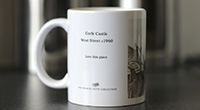Newark On Trent, Bridge Street 1906
Photo ref:
56492


More about this scene
Freeman, Hardy & Willis must have been one of the earliest high street chains to establish themselves in large and small towns alike. They appear to have been early exponents of the corporate image, both in the style of lettering used on their signs and in the way their premises were fitted out. Many feature the same design of outside lighting.
Add to Album
You must be signed in to save to an album
Sign inShare This Photo
Buy a Print
Unframed, Mounted, Framed and Canvas prints in a range of sizes and styles.

View Sizes & Prices
A Selection of Memories from Newark-on-Trent
For many years now, we've been inviting visitors to our website to add their own memories to share their experiences of life as it was, prompted by the photographs in our archive. Here are some from Newark-on-Trent
Sparked a Memory for you?
If this has sparked a memory, why not share it here?












 Before
Before
 After
After